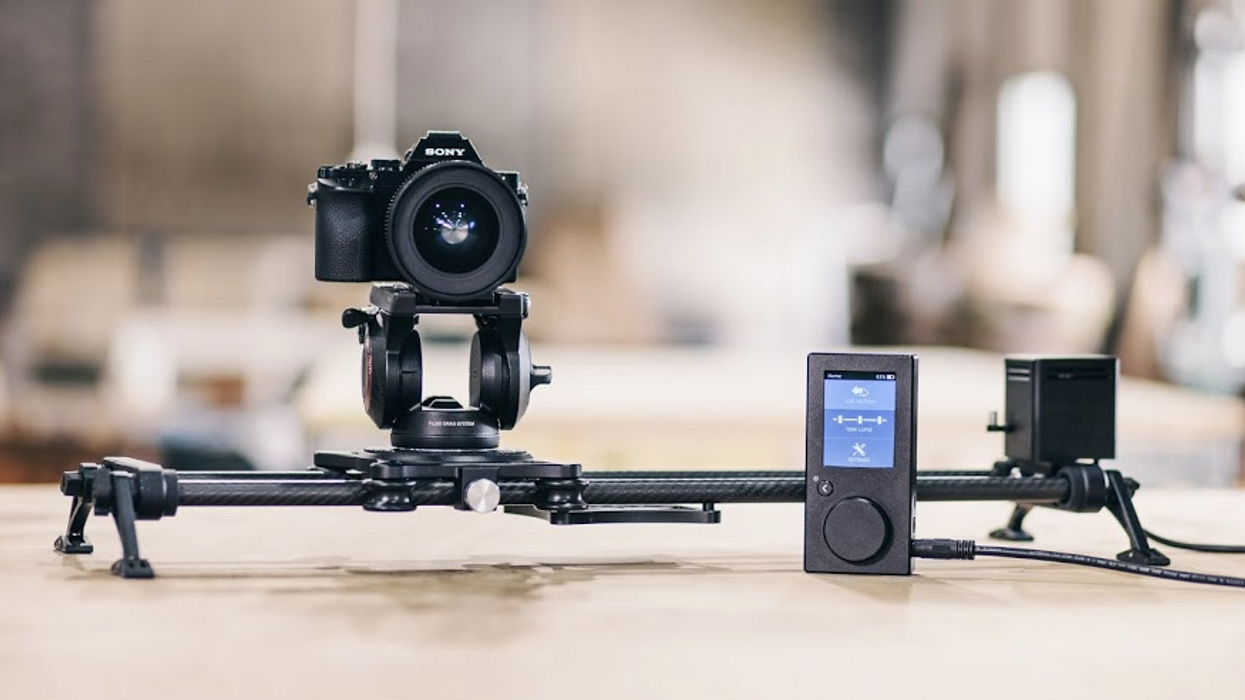Rhino Just Announced a New Pro Modular Slider & a Kickass Motion Control System
The folks at Rhino Camera Gear are rarely the first ones to the proverbial camera movement party, but when they show up, they bring it, and they bring it well.

Following up on the success of two prior Kickstarter campaigns (for the original Rhino Slider and the Rhino Shoulder Rig), today Rhino announced two brand new products that are sure to make a splash in the filmmaking world: the Rhino Slider EVO -- a highly modular professional slider system -- and Rhino Motion, the company's first foray into motion control for live-action and timelapse filmmaking.
https://www.kickstarter.com/projects/rhinocg/rhino-slider-evo-rhino-motion
There are some really killer improvements in the updated EVO slider from Rhino. Chiefly, the slider now has an integrated belt-drive system that allows for all sorts of accessories. The slider now comes with a weighted flywheel that adds a smooth sense of inertia to your hand-operated shots. This should mostly eliminate things like hand shake and inconsistent movement speeds, and it even adds a natural way of ramping or easing in and out of shots. The other major accessory that will be available to EVO slider users is the parallax add-on, which essentially adds another axis of controllable and repeatable motion to the slider experience.
The second part of Rhino's announcement today is their new motion control system, simply called Rhino Motion. In essence, Rhino Motion is among the most practical and easy to use motion control systems on the market (well, almost on the market). The motor, which is said to be extremely silent -- a must for live-action shots -- securely attaches to the EVO belt drive magnetically. Just pop it into place, and the whole system is ready to shoot. That's it. Then there's the interface used to control the motor, which is probably the simplest and most streamlined that I've seen to date. It makes operating the whole system about as easy as it could be, but with all of the added abilities of advanced .
Of course, right now the Rhino Motion system only operates with a single axis of motion, which means that it's not quite as versatile as many of the other motion control systems available these days. The folks at Rhino have told me that they're working on additional axes of motion control, but that the timeline for those additions isn't clear yet.
If you'd like to learn more about or purchase a Rhino Slider EVO or Rhino Motion, head on over to the company's Kickstarter campaign. The basic 2-foot carbon fiber EVO comes in at $450, while the stainless steel version (for heavier cameras) comes in at $500. The 42-inch versions of the EVO come in at $550 and $600 respectively. The Rhino Motion system adds an additional $550 on top of those prices, so the 2-foot carbon fiber EVO plus Rhino motion sits right at $1000, and so on.
Source: Kickstarter













